The Tomorrow People: Slaves Of Jedikiah, Part 4
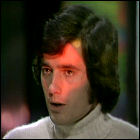 The fourth episode of The Tomorrow People series premieres on ITV. Francis de Wolff guest stars.
The fourth episode of The Tomorrow People series premieres on ITV. Francis de Wolff guest stars.
 The fourth episode of The Tomorrow People series premieres on ITV. Francis de Wolff guest stars.
The fourth episode of The Tomorrow People series premieres on ITV. Francis de Wolff guest stars.
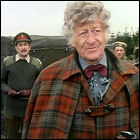 The 352nd episode of Doctor Who airs on BBC1. Stewart Bevan and Talfryn Thomas (Survivors) guest star.
The 352nd episode of Doctor Who airs on BBC1. Stewart Bevan and Talfryn Thomas (Survivors) guest star.
More about Doctor Who in the LogBook
Order VWORP!1 from theLogBook.com Store
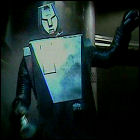 The fifth episode of The Tomorrow People series premieres on ITV. Francis de Wolff guest stars in the fifth and final part of a five-part serial.
The fifth episode of The Tomorrow People series premieres on ITV. Francis de Wolff guest stars in the fifth and final part of a five-part serial.
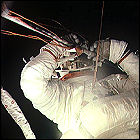 Two members of Skylab‘s first three-man crew undertake a three-and-a-half-hour spacewalk to take on the most difficult and dangerous part of the repairs to the space station: freeing a jammed solar “wing” required to provide almost half of the station’s electrical power. With no handholds and only tethers keeping them anchored to the station, astronauts Pete Conrad and Joseph Kerwin have a hard time even reaching the solar panel, and are knocked loose when, after overexerting themselves trying to manually pull the panel free, it jerks open; with only their tethers keeping them attached to Skylab, it’s a potentially life-threatening situation for both. Conrad, the third man to walk on the moon, later admits that the Skylab repair spacewalk gave him much greater concern for his own survival.
Two members of Skylab‘s first three-man crew undertake a three-and-a-half-hour spacewalk to take on the most difficult and dangerous part of the repairs to the space station: freeing a jammed solar “wing” required to provide almost half of the station’s electrical power. With no handholds and only tethers keeping them anchored to the station, astronauts Pete Conrad and Joseph Kerwin have a hard time even reaching the solar panel, and are knocked loose when, after overexerting themselves trying to manually pull the panel free, it jerks open; with only their tethers keeping them attached to Skylab, it’s a potentially life-threatening situation for both. Conrad, the third man to walk on the moon, later admits that the Skylab repair spacewalk gave him much greater concern for his own survival.
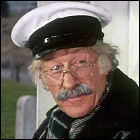 The 353rd episode of Doctor Who airs on BBC1. Stewart Bevan and Talfryn Thomas (Survivors) guest star.
The 353rd episode of Doctor Who airs on BBC1. Stewart Bevan and Talfryn Thomas (Survivors) guest star.
More about Doctor Who in the LogBook
Order VWORP!1 from theLogBook.com Store
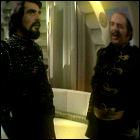 The sixth episode of The Tomorrow People is broadcast on ITV. Roger Bizley (I, Claudius) guest stars in the first part of a four-part serial.
The sixth episode of The Tomorrow People is broadcast on ITV. Roger Bizley (I, Claudius) guest stars in the first part of a four-part serial.
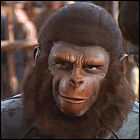 The last of the original cycle of time-bending sequels, Battle For The Planet Of The Apes is released in theaters. Facing diminishing returns, and a desire on the part of 20th Century Fox to exploit the Apes franchise on the small screen, the series comes to a suitably post-apocalyptic end.
The last of the original cycle of time-bending sequels, Battle For The Planet Of The Apes is released in theaters. Facing diminishing returns, and a desire on the part of 20th Century Fox to exploit the Apes franchise on the small screen, the series comes to a suitably post-apocalyptic end.
More about Planet Of The Apes in the LogBook
Hear about it on the Sci-Fi 5 podcast
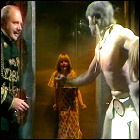 The seventh episode of The Tomorrow People is broadcast on ITV. Roger Bizley (I, Claudius) and Dave Prowse (Star Wars) guest star in the second part of a four-part serial.
The seventh episode of The Tomorrow People is broadcast on ITV. Roger Bizley (I, Claudius) and Dave Prowse (Star Wars) guest star in the second part of a four-part serial.
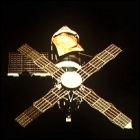 Having repaired and secured the damaged Skylab over the course of three spacewalks, the space station’s first three-man crew leaves the station and returns to Earth after 28 days in space, experiencing gravity after nearly a month of zero-G.
Having repaired and secured the damaged Skylab over the course of three spacewalks, the space station’s first three-man crew leaves the station and returns to Earth after 28 days in space, experiencing gravity after nearly a month of zero-G.
The first Skylab crew’s stay in space sets a new record, twice as long as the previous longest American manned spaceflight, Gemini 7 in 1965.
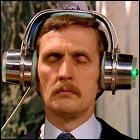 The 355th episode of Doctor Who airs on BBC1. This episode closes the series’ tenth season on the air, and is the last to feature Katy Manning as the Doctor’s companion, Jo Grant. The character doesn’t resurface until a 2010 episode of The Sarah Jane Adventures.
The 355th episode of Doctor Who airs on BBC1. This episode closes the series’ tenth season on the air, and is the last to feature Katy Manning as the Doctor’s companion, Jo Grant. The character doesn’t resurface until a 2010 episode of The Sarah Jane Adventures.
More about Doctor Who in the LogBook
Order VWORP!1 from theLogBook.com Store
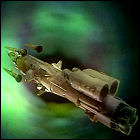 The eighth episode of The Tomorrow People is broadcast on ITV. Roger Bizley (I, Claudius) and Dave Prowse (Star Wars) guest star in the third part of a four-part serial.
The eighth episode of The Tomorrow People is broadcast on ITV. Roger Bizley (I, Claudius) and Dave Prowse (Star Wars) guest star in the third part of a four-part serial.
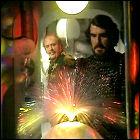 The ninth episode of The Tomorrow People is broadcast on ITV. Roger Bizley (I, Claudius) and Dave Prowse (Star Wars) guest star in the fourth and final part of a four-part serial.
The ninth episode of The Tomorrow People is broadcast on ITV. Roger Bizley (I, Claudius) and Dave Prowse (Star Wars) guest star in the fourth and final part of a four-part serial.
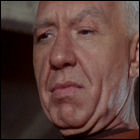 The tenth episode of The Tomorrow People is broadcast on ITV. Kevin Stoney (Doctor Who) and John Woodnutt (Knights Of God) guest star in the first part of a four-part serial.
The tenth episode of The Tomorrow People is broadcast on ITV. Kevin Stoney (Doctor Who) and John Woodnutt (Knights Of God) guest star in the first part of a four-part serial.
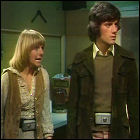 The 11th episode of The Tomorrow People is broadcast on ITV. Kevin Stoney (Doctor Who) and John Woodnutt (Knights Of God) guest star in the second part of a four-part serial.
The 11th episode of The Tomorrow People is broadcast on ITV. Kevin Stoney (Doctor Who) and John Woodnutt (Knights Of God) guest star in the second part of a four-part serial.
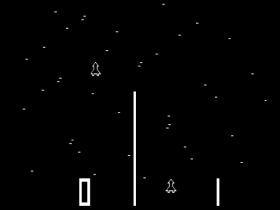 Atari releases its second arcade game: the very first video racing game, Space Race. Devised to fulfill a contractual game development obligation to rival manufacturer Bally Midway, the game is released by Midway under the title Asteroid, though Atari releases its own “clone” (of its own game) under the title Space Race on this date.
Atari releases its second arcade game: the very first video racing game, Space Race. Devised to fulfill a contractual game development obligation to rival manufacturer Bally Midway, the game is released by Midway under the title Asteroid, though Atari releases its own “clone” (of its own game) under the title Space Race on this date.
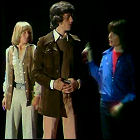 The 12th episode of The Tomorrow People is broadcast on ITV. Kevin Stoney (Doctor Who) and John Woodnutt (Knights Of God) guest star in the third part of a four-part serial.
The 12th episode of The Tomorrow People is broadcast on ITV. Kevin Stoney (Doctor Who) and John Woodnutt (Knights Of God) guest star in the third part of a four-part serial.
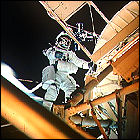 With the first Skylab crew having salvaged the first American space station, the second crew – designated Skylab 3 – lifts off for another long-term stay in space. Alan Bean, Jack Lousma and Owen Garriott spend 59 days aboard Skylab, performing a spacewalk to conduct further repairs to their damaged space station, investigating the effects of long-duration weightlessness and space travel on the human body, and observing the sun through Skylab’s solar telescope system. A thruster leak in the Apollo command/service module forces NASA to consider a rescue mission.
With the first Skylab crew having salvaged the first American space station, the second crew – designated Skylab 3 – lifts off for another long-term stay in space. Alan Bean, Jack Lousma and Owen Garriott spend 59 days aboard Skylab, performing a spacewalk to conduct further repairs to their damaged space station, investigating the effects of long-duration weightlessness and space travel on the human body, and observing the sun through Skylab’s solar telescope system. A thruster leak in the Apollo command/service module forces NASA to consider a rescue mission.
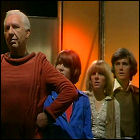 The 13th episode of The Tomorrow People is broadcast on ITV. Kevin Stoney (Doctor Who) and John Woodnutt (Knights Of God) guest star in the fourth and final part of a four-part serial, and the last episode of the show’s first season. This marks the final appearances of original cast members Sammie Winmill and Stephen Salmon.
The 13th episode of The Tomorrow People is broadcast on ITV. Kevin Stoney (Doctor Who) and John Woodnutt (Knights Of God) guest star in the fourth and final part of a four-part serial, and the last episode of the show’s first season. This marks the final appearances of original cast members Sammie Winmill and Stephen Salmon.
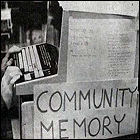 Early networked computing pioneers Lee Felsenstein, Efrem Lipkin and Mark Szpakowski open the first public Community Memory terminal at Leopold’s Records in Berkeley, California. With read-only access for free (and a 25-cent charge to add information to the database, which is maintained on a SDS 940 mainframe at TransAmerica Corporation and accessed via 110 baud acoustic modem), the intention is to computerize the popular push-pin-powered public notice board. Other terminals are eventually made available at various locations, but the SDS 940 proves to be inadequate, and this first iteration of the Community Memory Project will eventually be deactivated in January 1975. Some computer historians regard this as the first computer bulletin board system, although it was accessible only by being physically present at one of the provided nodes. The first dial-up BBS will not appear until 1978.
Early networked computing pioneers Lee Felsenstein, Efrem Lipkin and Mark Szpakowski open the first public Community Memory terminal at Leopold’s Records in Berkeley, California. With read-only access for free (and a 25-cent charge to add information to the database, which is maintained on a SDS 940 mainframe at TransAmerica Corporation and accessed via 110 baud acoustic modem), the intention is to computerize the popular push-pin-powered public notice board. Other terminals are eventually made available at various locations, but the SDS 940 proves to be inadequate, and this first iteration of the Community Memory Project will eventually be deactivated in January 1975. Some computer historians regard this as the first computer bulletin board system, although it was accessible only by being physically present at one of the provided nodes. The first dial-up BBS will not appear until 1978.
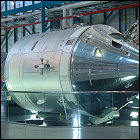 A thruster leak in the Skylab 3 crew’s Apollo command/service module forces NASA to consider a Skylab Rescue mission using a modified five-seater Apollo vehicle, mounted atop a Saturn IB and rolled out to the pad in readiness for the emergency flight. NASA brings in enough engineers and employees to have shifts working around the clock, seven days a week, to get the emergency mission ready for launch on September 9th. The thruster issue is later resolved, and the first-ever planned space rescue mission stands down. Astronauts Vance Brand and Don Lind are assigned to the rescue mission; both men later flew the Space Shuttle, though Brand will also fly in the Apollo-Soyuz Test Project. The modified command/service module and Saturn rocket are retained in case a rescue is needed for the final Skylab flight, and then as an Apollo-Soyuz backup vehicle, before being retired and displayed at the Smithsonian and Kennedy Space Center.
A thruster leak in the Skylab 3 crew’s Apollo command/service module forces NASA to consider a Skylab Rescue mission using a modified five-seater Apollo vehicle, mounted atop a Saturn IB and rolled out to the pad in readiness for the emergency flight. NASA brings in enough engineers and employees to have shifts working around the clock, seven days a week, to get the emergency mission ready for launch on September 9th. The thruster issue is later resolved, and the first-ever planned space rescue mission stands down. Astronauts Vance Brand and Don Lind are assigned to the rescue mission; both men later flew the Space Shuttle, though Brand will also fly in the Apollo-Soyuz Test Project. The modified command/service module and Saturn rocket are retained in case a rescue is needed for the final Skylab flight, and then as an Apollo-Soyuz backup vehicle, before being retired and displayed at the Smithsonian and Kennedy Space Center.
 EMI Records releases Roy Wood‘s first solo album, Boulders, following his departure from The Move and Electric Light Orchestra. Aside from a single instrument on a single song, every voice and instrument on the album is performed by Wood himself.
EMI Records releases Roy Wood‘s first solo album, Boulders, following his departure from The Move and Electric Light Orchestra. Aside from a single instrument on a single song, every voice and instrument on the album is performed by Wood himself.
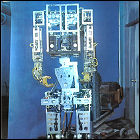 At Tokyo’s Waseda University, robotics pioneer Professor Ichiro Kato and his team unveil the first full-size humanoid robot, WABOT-1. Capable of hearing and responding in speech, grasping objects, using artificial eyes to measure distances to objects, and rudimentary walking movement, WABOT-1 is the culmination of designs laid out as early as 1967 and construction and testing begun in 1970. Its creators estimate that it had the mental abilities of an 18-month-old child. (It is still intact and on display at Waseda University.)
At Tokyo’s Waseda University, robotics pioneer Professor Ichiro Kato and his team unveil the first full-size humanoid robot, WABOT-1. Capable of hearing and responding in speech, grasping objects, using artificial eyes to measure distances to objects, and rudimentary walking movement, WABOT-1 is the culmination of designs laid out as early as 1967 and construction and testing begun in 1970. Its creators estimate that it had the mental abilities of an 18-month-old child. (It is still intact and on display at Waseda University.)
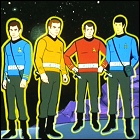 After years of denying that Star Trek had ever been a “kids show” like its prime-time rival Lost In Space, Gene Roddenberry agrees to NBC’s offer to restart the science fiction cult classic as an animated series, premiering on the seventh anniversary of the live-action show’s debut with the episode Beyond The Farthest Star. In the end, this series becomes the only iteration of the Star Trek franchise to win an Emmy Award for a non-technical (i.e. music, hairstyling, special effects) category.
After years of denying that Star Trek had ever been a “kids show” like its prime-time rival Lost In Space, Gene Roddenberry agrees to NBC’s offer to restart the science fiction cult classic as an animated series, premiering on the seventh anniversary of the live-action show’s debut with the episode Beyond The Farthest Star. In the end, this series becomes the only iteration of the Star Trek franchise to win an Emmy Award for a non-technical (i.e. music, hairstyling, special effects) category.
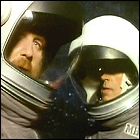 The first episode of the BBC’s short-lived science fiction series Moonbase 3, Departure And Arrival, premieres. Written by series creators Barry Letts and Terrance Dicks, and produced during their downtime as producer and script editor of Doctor Who, Moonbase 3 is an attempt to do “serious” SF without fanciful elements such as aliens.
The first episode of the BBC’s short-lived science fiction series Moonbase 3, Departure And Arrival, premieres. Written by series creators Barry Letts and Terrance Dicks, and produced during their downtime as producer and script editor of Doctor Who, Moonbase 3 is an attempt to do “serious” SF without fanciful elements such as aliens.
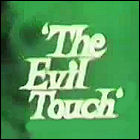 The first episode of the horror anthology series The Evil Touch premieres on Australia’s Nine Network, hosted by Anthony Quayle (Strange Report). (The series will later appear in the U.S. and elsewhere in first-run syndication.) Robert Lansing guest stars.
The first episode of the horror anthology series The Evil Touch premieres on Australia’s Nine Network, hosted by Anthony Quayle (Strange Report). (The series will later appear in the U.S. and elsewhere in first-run syndication.) Robert Lansing guest stars.
This series is not yet chronicled in the LogBook. You could help change that.
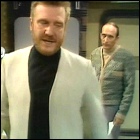 The second episode of the BBC’s short-lived science fiction series Moonbase 3, Behemoth, premieres. Peter Miles guest stars.
The second episode of the BBC’s short-lived science fiction series Moonbase 3, Behemoth, premieres. Peter Miles guest stars.
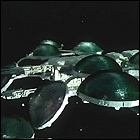 After months of preparation and contentious saber-rattling by series creator Harlan Ellison, who demands to have his name replaced with a pseudonym after quitting the series he devised, The Starlost premieres in Canada and the United States with the episode Voyage Of Discovery, showcasing an intriguing (but ultimately under-utilized) series premise with a shockingly low-budget, shot-on-video look. It’s the first science fiction series produced in Canada with the intention of broadcast in the United States, which would become a common practice in the 21st century. It runs for only a single, truncated season, and for many years is much-maligned as “the worst TV sci-fi series ever”; Ellison’s complaints about the treatment of his own creation in the years to come does little to dispel this opinion.
After months of preparation and contentious saber-rattling by series creator Harlan Ellison, who demands to have his name replaced with a pseudonym after quitting the series he devised, The Starlost premieres in Canada and the United States with the episode Voyage Of Discovery, showcasing an intriguing (but ultimately under-utilized) series premise with a shockingly low-budget, shot-on-video look. It’s the first science fiction series produced in Canada with the intention of broadcast in the United States, which would become a common practice in the 21st century. It runs for only a single, truncated season, and for many years is much-maligned as “the worst TV sci-fi series ever”; Ellison’s complaints about the treatment of his own creation in the years to come does little to dispel this opinion.
 The second episode of the horror anthology series The Evil Touch airs on Australia’s Nine Network, hosted by Anthony Quayle (Strange Report). (The series will later appear in the U.S. and elsewhere in first-run syndication.) Mildred Natwick (Dangerous Liaisons) guest stars in an episode written by Sylvester Stallone.
The second episode of the horror anthology series The Evil Touch airs on Australia’s Nine Network, hosted by Anthony Quayle (Strange Report). (The series will later appear in the U.S. and elsewhere in first-run syndication.) Mildred Natwick (Dangerous Liaisons) guest stars in an episode written by Sylvester Stallone.
This series is not yet chronicled in the LogBook. You could help change that.
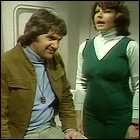 The third episode of the BBC’s short-lived science fiction series Moonbase 3, Achilles Heel, premieres.
The third episode of the BBC’s short-lived science fiction series Moonbase 3, Achilles Heel, premieres.